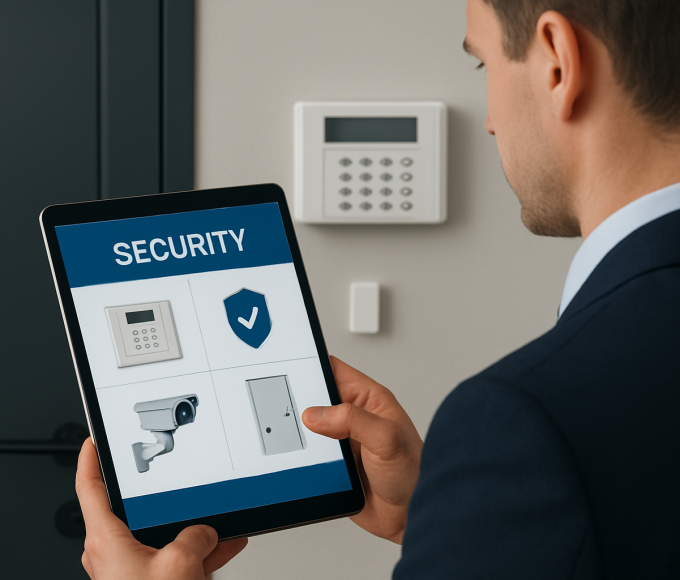Accessing free Wi-Fi at a café, airport, or hotel is a magical experience: open your laptop, bypass the data plan, and you’re instantly connected to the internet. But that open signal is a beacon for cybercrooks. Without the encryption that guards your home network, every click, swipe, and keystroke travels through the air unprotected—ripe for anyone nearby with the right tools. From social media logins to bank details, nothing is truly private on an unsecured hotspot. Before you tap Connect, see why public Wi-Fi is a hacker’s playground (and how to stay safe) and the simple habits that keep your information out of a hacker’s hands.
How Hackers Actually Intercept Data (Deeper Technical Insight)
Public Wi-Fi may appear as inconspicuous, convenient airwaves, but hackers can quickly hijack these same waves. Below is a tour of the three most common attacks and the everyday hacker tools that make them possible.
The Simple Flow of a Man-in-the-Middle Attack
- You connect to “CoffeeShop_WiFi.”
- The attacker spoofs the network’s MAC address, becoming an invisible relay.
- All traffic (websites, logins, emails) passes through the attacker first.
- Credentials captured. The hacker now has your usernames, passwords, or session cookies.
Why This Matters
These attacks don’t need Hollywood-style hacking skills—just free software, a cheap USB Wi-Fi adapter, and a crowded café. Why public Wi-Fi is a hacker’s playground (and how to stay safe) isn’t just a catchy title—it reflects the urgency of using VPNs and encrypted connections every time you go online outside your home.
Real-Life Horror Stories (Case Studies)
Statistics can feel abstract, so let’s ground the danger in three short, true-to-life tales that show exactly what can happen when you trust the wrong hotspot.
Café Con Game—San Francisco
Jenna, a freelance designer, stopped at her neighborhood coffee shop and connected to “CoffeeHouse_Free” without thinking twice. Ten minutes later, she paid for an oat-milk latte with the same card she had just used to buy fonts online. By nightfall, her bank flagged more than $3,000 in luxury-brand purchases. The culprit? A hacker, who was sitting two tables away, set up an “evil-twin” network. Every card number typed over that Wi-Fi went straight to his screen. Jenna recovered the money after weeks of paperwork, but the stress—and the lessons—lasted far longer.
Hotel Hijack—Singapore
During a security conference, researchers discovered a fake login page on the hotel’s guest Wi-Fi. Anyone who typed a room number and last name was silently redirected through a man-in-the-middle (MitM) relay. Over two days, the attackers captured corporate credentials from multiple Fortune 500 guests. One company later confirmed a seven-figure ransomware incident traced back to that single compromise on “free, premium” hotel Wi-Fi.
Airport Ambush—Atlanta
A small team of penetration testers set up an inconspicuous hotspot titled “ATL-VIP-WiFi” in a busy terminal. In under 30 minutes, more than 50 travelers—several of them airline staff—connected. Packet-sniffing tools like Kismet and tcpdump revealed unencrypted logins to boarding-pass printing systems and personal email. The testers shut down after collecting enough evidence, but a malicious actor could have pivoted into flight operations networks.
Each victim made the same small mistake—trusting an unverified network. This is exactly why public Wi-Fi is a hacker’s playground (and how to stay safe) should be required reading for anyone working remotely or traveling often.
What Makes Public Wi-Fi a Hacker’s Playground?
Public Wi-Fi isn’t just convenient for travelers and coffee shop regulars—it’s practically gift-wrapped for cybercriminals. The same features that make it easy for you to log on also make it easy for attackers to snoop, spoof, and steal. Here’s why the typical hotspot is so irresistible to bad actors:
Why This Matters
Recognizing that a public hotspot is fundamentally built for access, not security, reframes the whole Wi-Fi experience. Once you see the structural weaknesses—unencrypted traffic, shared credentials, creaky firmware—you understand why public Wi-Fi is a hacker’s playground (and how to stay safe), and why you must adopt a “trust nothing” mindset while browsing.
Free Wi-Fi vs. Paid Wi-Fi: Is One Safer?
Many travelers assume the word “paid” equals “protected.” Sadly, price and security are not the same thing. Whether you swipe a credit card for “premium lounge Wi-Fi” or join a free café hotspot, your safety still depends on how the network is configured and who controls it.
Why Paying Doesn’t Guarantee Protection
- Same Airwaves, Same Weaknesses
Even if you pay $20 for 24-hour access, the data still travels over radio waves, and anyone can capture it with tools like Wireshark or a Hak5 Pineapple. - Outdated Hardware
Hotels often deploy routers once and forget them. Unpatched firmware means known vulnerabilities remain open for years. - Captive Portals ≠ Encryption
Typing a room number behind a branded login screen feels official, but the traffic that follows is often plain text unless the site itself uses HTTPS. - Rogue “Premium” Clones
Attackers can create an evil-twin SSID named “Hilton-VIP-WiFi” and charge a small fee through a fake Stripe page—victims actually pay to be hacked.
These paid services often lure users into a false sense of safety—yet why public Wi-Fi is a hacker’s playground (and how to stay safe) reminds us that encryption, not cost, determines real protection.
Quick Safety Checklist
- Inspect the lock: If the SSID shows the padlock icon on your device, it uses WPA2/WPA3. No lock = no baseline encryption.
- Prefer WPA3-Enterprise: Rare but far safer; requires unique credentials, not a shared password.
- Still use a VPN. Paid access charges for speed and convenience, not privacy. Encrypt your data.
- Beware duplicate names: If two “Premium-Airport-WiFi” networks appear, one may be malicious. Ask the staff for the exact SSID.
Device-Specific Risks: Laptops, Phones, and Tablets Aren’t Equally Safe
All gadgets ride the same Wi-Fi waves, yet each one exposes you in different ways. Knowing the weak spots of your device helps you harden it before the next layover.
Why Laptops Suffer Most
Laptops run background services—print spoolers, remote desktop helpers, even photo-sharing daemons—that quietly broadcast on the network. A hacker running Nmap can find those services and exploit known vulnerabilities in minutes.
Why Phones Feel Safer (But Aren’t)
Mobile operating systems sandbox apps, yet phones betray you with convenience: they remember every coffee shop SSID forever. A rogue hotspot named “Starbucks_WiFi_Guest” tricks your phone into handing over traffic without a single tap.
Tablets: The Forgotten Middle Child
Many people treat tablets like “big phones,” ignoring system updates because the device “just works.” Attackers love tablets for that very reason—outdated browsers and ad-heavy games funnel unencrypted traffic ripe for packet sniffing.
Public Wi-Fi and Children/Teens: Keeping Young Users Safe
Today’s kids live online. They stream cartoons at the mall, trade game skins at the airport, and post selfies from the café—all while connected to whatever “FREE-WIFI” pops up first. Because they crave speed and convenience, they rarely pause to question whether a hotspot is genuine or safe. Consequently, young users can become the easiest targets on any public network.
Why Young Users Are Extra-Vulnerable
- Auto-Connect Habits— Phones and tablets often remember old networks. Whenever the SSID reappears—real or fake—the device reconnects without warning.
- Game & Chat Traffic— Popular games, video apps, and messaging platforms don’t always force encryption. Hackers can sniff unprotected packets to harvest login tokens or in-game purchase details.
- Click-First Curiosity— Bright pop-ups promising bonus coins or rare skins tempt kids to tap “Download,” unwittingly installing adware or worse.
Five Practical Safeguards for Parents
- Disable Auto-Join: In settings, turn off the option that reconnects to known networks automatically.
- Use a family VPN: Install a kid-friendly VPN that launches at startup, encrypting traffic wherever they roam.
- Lock Down In-App Purchases: A passcode or biometric approval is required before any payment goes through.
- Teach a Two-Step Rule: Tell kids never to connect if the network name looks odd and there’s no welcome screen—both red flags must be clear first.
- Monitor New Apps: Check the updated history and privacy ratings; delete anything that hasn’t been patched within the last year.
Every parent should understand why public Wi-Fi is a hacker’s playground (and how to stay safe) and pass on practical habits to protect younger users from data theft and social engineering.
Tools to Check Wi-Fi Network Safety
Before you hit “Connect,” it pays to run a 60-second safety scan. You don’t need deep technical skills—just the right apps. Below are four free or low-cost tools that spot red flags before hackers do.
| Tool | Platform | One-Line Superpower | Quick-Start Steps |
| Fing | iOS / Android | Lists every device on the network so you see who’s “lurking.” | 1) Open the app. 2) Tap “Scan for devices.” 3) Look for strange names or duplicate routers. |
| NetSpot | Windows / macOS | Creates a heat map showing weak spots and rogue access points. | 1) Launch NetSpot. 2) Select “Discover.” 3) Sort by security; avoid networks showing “Open / None.” |
| Avast Wi-Fi Inspector | Windows / Android | Checks for outdated routers and known vulnerabilities in seconds. | 1) Tap “Scan.” 2) Review alerts like “Weak encryption” or “Default credentials.” 3) Disconnect if red flags appear. |
| Wireshark (advanced) | Windows / macOS / Linux | Sniffs raw packets to reveal unencrypted data flying past. | 1) Install. 2) Select the active Wi-Fi adapter. 3) If you see usernames in plain text, back out—fast. |
Three-Step Safety Routine
- Scan Before You Join
Open Fing or Avast in airplane mode, then enable Wi-Fi and run a scan. If the network floods you with unknown devices or shows “open” encryption, pick a different hotspot or use your phone’s data. - Check the Encryption Label
NetSpot and most phone settings display network security (WPA2, WPA3, or Open). Avoid “open” like you’d avoid a stranger offering free candy. - Force HTTPS Everywhere
Install browser add-ons such as HTTPS Everywhere or set Chrome’s “Always use secure connections.” They upgrade sites to encrypted versions automatically, blocking snoops—even if you misclick.
Quick Rule of Thumb:
If a tool shouts red or the network says “Open/Unsecured,” hit disconnect, fire up your VPN, or tether to your mobile hotspot.
By spending a single minute with these tools, you turn “connecting blind” into “connecting smart,” slicing a hacker’s chances of success to almost zero.
What You Should Never Do on Public Wi-Fi
Public Wi-Fi can lull you into a false sense of security. Because it loads Netflix or Instagram without complaint, you may assume it is safe for everything else. It isn’t. Below are the online activities you should avoid at all costs—no matter how strong the signal or how urgent the task feels.
Quick-Fire “Don’ts” for the Coffee-Shop Crowd
- Don’t auto-connect. Turn off the settings on your device that join known networks without asking.
- Don’t stay signed in. Log out of every service the moment you finish.
- Don’t ignore browser warnings. A single red-flag message means “disconnect now.”
- Don’t click pop-ups. Attackers inject many to trigger malware downloads.
- Don’t assume HTTPS is enough. While better than HTTP, it won’t stop a fake hotspot from funneling traffic through an attacker first.
Why Strict “No-Go” Rules Matter
Hackers rely on impulse decisions: that quick bank-balance check, the flash sale you must grab, or the urge to upload a presentation before boarding. These moments are exactly when public Wi-Fi is a hacker’s playground (and how to stay safe) becomes more than just advice—it becomes your daily defense manual.
How to Stay Safe If You Must Use Public Wi-Fi
Sometimes you have no choice—your cellular data is gone, you’re stuck on a layover, or the hotel charges a fortune for wired internet.
When public Wi-Fi is the only option, follow these eight ironclad rules to keep prying eyes out:
- Flip on a VPN before you connect.
A virtual private network scrambles every packet leaving your device, so even if a hacker captures the traffic, it looks like noise. - Stick to HTTPS-only sites.
Check for the padlock and “https://” in the address bar. If it’s missing, wait until you’re on a trusted network. - Turn off file sharing and AirDrop.
On both laptops and phones, turn off sharing features. Otherwise, nearby attackers can browse your public folders. - Disable “Auto-Join” after you’re done.
Forget the network so your device doesn’t reconnect later without you noticing. - Use your phone’s hotspot when possible.
Cellular data is encrypted end-to-end. It’s slower but infinitely safer for banking and work email. - Log out of accounts the moment you finish.
Don’t give thieves a chance to hijack lingering session cookies. - Keep your OS, browser, and apps updated.
Patches fix the significant exploits Wi-Fi attackers hunt for every day. - Run a reputable firewall or security suite.
Even free tools like the built-in Windows or macOS firewall add a strong barrier against unsolicited connections.
Core point: Convenience shouldn’t cost you your identity. A two-minute security routine—VPN on, sharing off, HTTPS checked—can foil most casual hackers and keep your data yours, even when you’re sipping coffee over someone else’s Wi-Fi.
Are Mobile Apps Safe on Public Wi-Fi?
Short answer: sometimes, yet far less often than you think. Mobile apps feel safer than browsers because they live inside their icons, but most still send data across the same open airwaves. If that traffic isn’t encrypted end-to-end, anyone lurking on the network can scoop up what your thumbs just tapped.
How the Attack Unfolds
- Auto-Connect Trap
Your phone silently joins “FREE_AIRPORT_WIFI” because it remembers a similar name. - API Call in Transit
A weather app fetches the forecast using plain HTTP. - Packet Sniffing
A nearby laptop running Kismet captures the unencrypted JSON request, which includes GPS coordinates. - Data Correlation
The attacker now knows you’re 1,200 miles from home—prime intel for physical burglary or social-engineering scams.
Quick Checks Before You Tap
- Look for HTTPS/TLS 1.2+ in the app’s privacy or developer notes.
- Update religiously. Patches often fix broken encryption routines.
- Avoid sideloading APKs; unofficial stores rarely vet security.
- Disable Auto-Join for public SSIDs so apps don’t chatter in the background.
- Use a VPN anyway. Even encrypted apps can reveal metadata (who, when, where).
Pro Tip:
If an app won’t work over a VPN, treat that as a red flag—it’s probably cutting security corners.
Safe-Use Blueprint
- Open your VPN first.
- Launch only the apps you truly need.
- Log out when finished.
- Purge any saved credentials in low-priority apps.
By treating every tap on public Wi-Fi as a potential postcard in plain view, you’ll remember to wrap your data in the digital envelope it deserves.
Conclusion & CTA
Using public Wi-Fi without protection is like whispering your PIN over a megaphone. Hackers aren’t just lurking—they’re automating, scaling, and cashing out faster than ever. However, you can prevent most attacks by implementing nine simple habits. Let Why Public Wi-Fi Is a Hacker’s Playground (and How to Stay Safe) guide your actions whenever you browse beyond your home network?

















Leave a comment